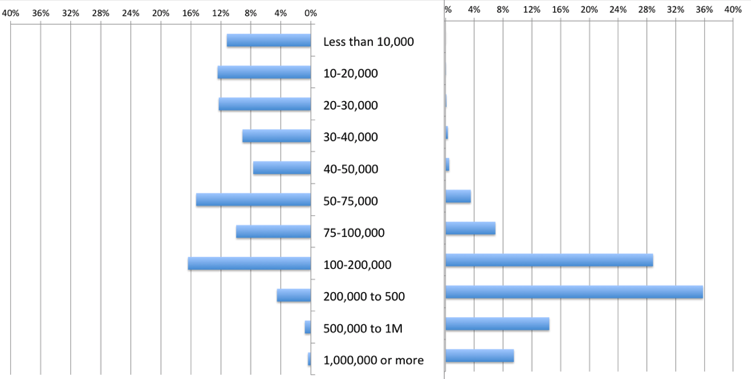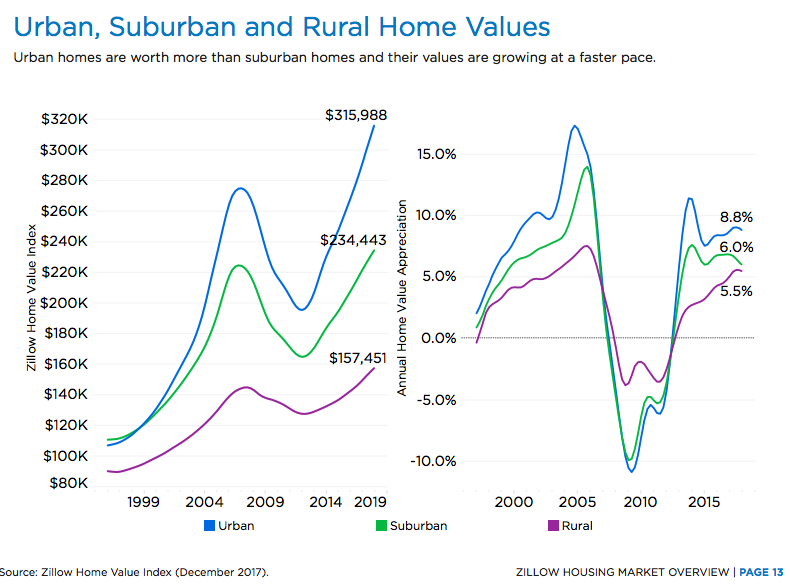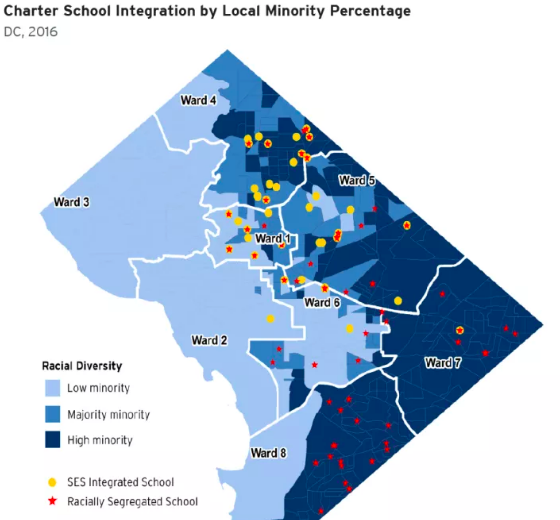What City Observatory did this week
1. Gerontopoly: Is homeownership a sure route to building wealth? It has been in the US, but increasingly, its only working for older generations. Homeowners 55 and older now hold most of all of equity in owner-occupied homes in the US. Younger adults have only about half as much housing wealth as their parents did when they were their age. As we’ve noted, rising real home prices represent a straight transfer of wealth from younger generations to older ones, which is exactly what appears to be happening in the US.
2. The mortgage interest deduction: smaller, but now even more unfair. The recently passed Tax Cut and Jobs Act pares back the eligibility for the mortgage interest deduction, and will reduce its cost to the federal treasury by almost half. But the benefits of the MID now go even more to the highest income Americans. The top 1.2 percent of households (with incomes of more than $500,000) will get a quarter of the savings from the MID, while the bottom 50 percent of households (those with incomes less than $50,000) will get one percent of the benefits of MID. The tax code–which remains the biggest source of funding to subsidize housing costs–is even more skewed to high income households than before.
3. The Dow of Cities: Big Data edition. Zillow gathers data from home sales across the nation and produces detailed monthly estimates of house prices for millions of homes. One of the findings in their latest quarterly housing market report confirms a trend we’ve been following at City Observatory: housing in cities is commanding a large and growing premium over housing in the suburbs. The average city home, which sold at a slight discount to the typical suburban home in 2000, now fetches a price more than $80,000 greater. This is clear evidence of the growing value that Americans put on urban living, and a signal that we’re facing a shortage of cities.
Must read
1. Don’t ignore class when addressing racial gaps. Harvard’s William Julius Wilson has a review and commentary of the latest Raj Chetty/Nate Hendren Equality of Opportunity Project research on the persistence of racial gaps in intergenerational economic mobility. He says the importance of this research can’t be overstated, and that it should change our views of how the word works. Wilson stresses the finding that the presence of fathers (and not just one’s own father) in a neighborhood seems to be strongly correlated with intergenerational mobility, especially for black boys. But the problem is that fewer than 5 percent of black children live in the kind of low poverty, father-rich neighborhoods that are associated with economic mobility. As a result, we need to pay much more attention to the combined effect of race and class as they interact: black households are now more segregated by income that white or Latino households, meaning the effects of concentrated poverty bear more heavily on black families.
2. All the world’s (big) cities. We tend to be a bit US-centric at City Observatory, so we welcome the opportunity to present a more global picture of urbanization around the world. Duncan Smith of CityGeographics has produced a World City Populations Interactive Map which shows population estimates for the world’s largest cities from 1950 through (predicted)2030 levels. Its fascinating to see how many big cities they are, and how they are clustered in different continents.
3. Neighborhood and school segregation in Washington. The Brookings Institution has an interesting analysis of racial and economic patterns of school attendance and neighborhood population for the District of Columbia. It shows that DC is still very segregated, and that a combination of charter schools (in mostly African-Amercan neighborhoods) and private schools (in mostly White neighborhoods) tend to recapitulate historic patterns of segregation. Integration seems to be most pronounced in those neighborhoods in the middle of the district; as the report puts it: “socioeconomically diverse schools cluster along the rich-poor, black-white dividing line in the nation’s capital.”
This finding points up the close connection between neighborhood integration and school integration It’s difficult to establish integrated schools in segregated neighborhoods (see Ward 3 and Ward 8). The more mixed the demographics of the neighborhood, the more likely schools are to be integrated (Wards 1, 4 and 5).
In the news
Next City cites our analysis showing that peak hour car commuters have higher incomes than those who travel off-peak, use transit, or bike or walk to work.





